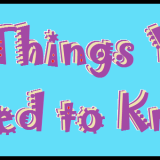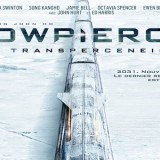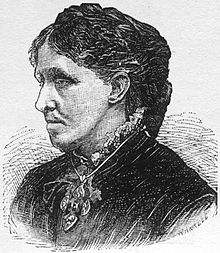Novels and Nonsense #2 – Planning Your Novel
So you’ve got a fantastically kick-ass novel idea, and you just can’t wait to spew words all over the place in a flurry of awesomeness. To accompany that idea, you may or may not have a novel plan in place. You don’t have to have a plan, of course, but I would strongly suggest one. It can be an elaborate scheme with layers upon layers of planning, or it can be a few small paragraphs written down onto some paper. It’s entirely up to you.
Before I get into the juicy stuff, there’s no such thing as a foolproof way to plan a novel. Every single person is different, and so some techniques work a lot better for some people compared to others. Some write best when they have everything planned to a tee, while others write best with some unorganised scrawling to aid them. Luckily for us writers, there are some really awesome novel planning techniques out there. Luckily for you, I’m going to share some of them with y’all!
Ermahgerd, right?!

I want to include as many techniques as possible here, so I won’t give very detailed descriptions of each one. What I will do though is attach links that lead to more detailed guides. That way, if you like the sound of any of the techniques I discuss, you can delve more deeply into them. Just click on the title of each technique for a more details.
This is a great method for anyone who has a tendency to be a bit disorganised, and it’s looser and more flexible than The Snowflake Method. You start by dashing down any topics you have in mind regarding your novel, so it’s good for when you need to spew out the ideas that have been building up in your head for a while. This method tends to be more plot-focused than anything else. As a result, this is an especially good novel planning technique if plotting isn’t your forte. It’s very useful for avoiding plot-holes, creating an interesting plot beforehand, and finding crucial parts of your plot that will require a lot of attention when you get to writing them.
If you’re the kind of person who prefers not to outline your plots, Character Charts are a good alternative. In case you haven’t guessed, this method is all about characters and characterisation. If you’ve ever participated in a YWS storybook before, you will have already dipped your toes into this technique before. Character charts are basically epic character profiles. This technique is extremely flexible because you can easily make up a chart yourself, and you can make it as detailed or as vague as you want. Although the detailed kind usually produce the best novels. Like I said before, this technique is great if you’re more likely to bathe in a bath of steaming coal than write a plot outline for your novel.
This is another very popular method, and it does what it says on the tin. It’s all about outlining your summary. It can be as detailed or as vague as you want, but it’s basically briefly planning your plot so you have an idea of where you’re heading as you write. Some people don’t like this technique because they feel it disrupts their creativity, but I personally like it. If you’re ever unsure about what to write next when you’re halfway through your novel, you can just check your summary to see what you have planned. You can outline the novels’ chapters, the novels’ scenes, your characters and what happens to them, what happens in the beginning, middle, and end… You can outline anything you want. This is definitely the most flexible one I’ve mentioned so far.
This method is for those of you who like very detailed plans that can guide you through every part of your novel. It’s a method based on gradually building up your plan in small steps, starting with a single sentence, and ending with a detailed synopsis of every chapter, immense character profiles, and spreadsheets galore. This is an especially good method for those of you who want to try and get your novel published because through the process of creating your snowflake inspired plan, you’ll write synopses and proposals. It’s also probably the most popular novel planning technique out there, which shows that it can definitely be a useful one.

If you Google these four methods, you are likely to find a lot of guides, articles, and examples of them. That’s because they’re generally well-known methods that stick to a certain structure, even if said structure is pretty loose. Other techniques tend to be drastically more flexible and unstructured, although a summary outline can be extremely flexible if you want it to be, and so I can’t really link you to any specific guides. I’ll note down a few good examples.
Chapter by Chapter Synopsis
This is something I’m a big fan of, and it’s a very easy method to use. You write a synopsis of each chapter. Obviously the content of your chapters will change as you write your novel, but chapter synopses are brilliant for keeping you on track as you go along. As with any other method, you can be as vague or as detailed as you want, and so this technique can pretty much suit anyone.
The Reverse Outline
Basically, write a novel summary backwards. Some people find this a lot more helpful than writing in chronological order, and hey, each to their own. Start by describing the end of the novel, move to the middle, and then end with the beginning. This can produce a strong outline of the novel’s beginning because by the time you reach it, you know exactly what happens in the end, and so you can describe the beginning more accurately.
The Organised Mess
Bear in mind that you can make your novel plan as nonsensical and messy as you want. So long as you understand it, it doesn’t matter in the slightest. As a result, some people like to just dash down random ideas and thoughts that come into their head. From whole chapter ideas to single lines of dialogue, if they pop into your head and you like them, write them down. You’re going to be the only one using this plan, so all that matters is that it makes sense to you.
As for the technique I use…
I literally don’t even know. I kind of throw a bit of everything together to make my own personal mash-up method, and that’s something else I want to note. You don’t have to stick to one novel planning method. Throw as many different methods as you want together, and come up with your own personalised one that’s suited to you. If I had to describe my method, I’d say that it’s a mixture of the chapter by chapter synopsis, the summary outline, and the organised mess.
Now, some people can write an epic novel without an ounce of planning. If you’re one of these people then please be aware that you’re an endangered species. In fact, I would suggest you call up RSPCA and make them aware of your existence. They’d appreciate it.
Keep writing,
xoxo Skins









